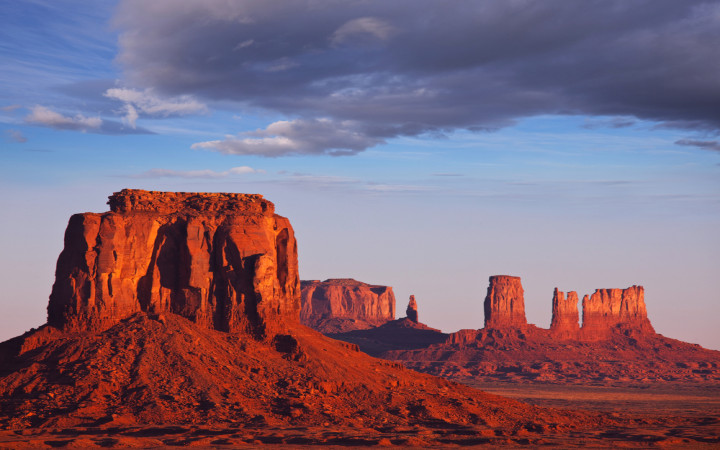Today’s Wonder of the Day was inspired by Charleigh. Charleigh Wonders, “How are buttes made?” Thanks for WONDERing with us, Charleigh!
Would you like to have been one of the first explorers to venture into the Old West? Today, places like Colorado, Montana, Wyoming, Utah, and California call adventurers and nature lovers to their beautiful sights. Can you imagine what it would have been like to travel miles and miles to finally be greeted by the majestic Rocky Mountains?
We WONDER what explorers thought when they first saw the tall, isolated rock formations of Monument Valley in Utah. What are we talking about? Buttes, of course!
A butte is a prominent isolated hill with steep sides and a small, flat top. In fact, the word “butte" comes from a French word meaning “small hill."
A geological feature is the mesa, which is distinguished from the butte by its much larger size. Buttes, for example, usually have a surface area of less than 10,000 square feet. Mesas, on the other hand, can have as much as four square miles of surface area.
In addition to size, geographers often use another simpler way to differentiate buttes from mesas. Mesas have tops that are wider than they are tall, while buttes are taller than they are wide.
Both buttes and mesas are formed by the scientific process of physical weathering of rock formations. Weathering refers to the process by which rocks are broken down into smaller pieces without substantial movement.
Buttes and mesas, for example, are formed when the surface material of a hill or a mountain — called the cap rock — resists physical weathering but underlying materials (usually softer rock) do not. Over time, the underlying materials break down through a process called erosion, leaving an isolated, flat-topped hill called a butte (or a mesa if it's really large).
Buttes and mesas are usually found in fairly dry areas. When plants and ground cover are scarce, the softer rock layers of buttes and mesas are left exposed to running water. Over time, softer rock erodes, leaving steep, vertical sides and gently-sloping bases where the eroded rock collects.




